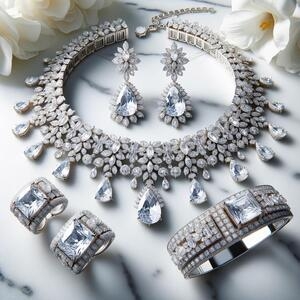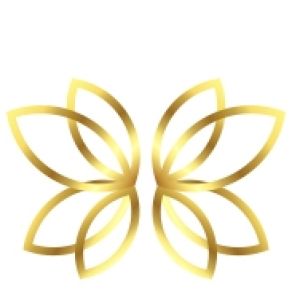what is cubic zirconia?Posted by eric on October 25th, 2023  Cubic zirconia (CZ) is the world's most popular diamond simulant, prized for its brilliance, durability, and affordability. While CZ is not a real diamond, it shares many of the same optical properties, making it a popular choice for jewelry designers and consumers.if you interest cubic zirconia jewelry cheap price you can buy at wholesale925silver Origins of Cubic ZirconiaCZ was first synthesized in a laboratory in 1937 by a team of German scientists led by Dr. M. V. Stackelberg. The scientists attempted to create a synthetic diamond, but instead, they produced a new material with unique properties. CZ was initially used in industrial applications, but its potential as a diamond simulant was quickly recognized. Geological Makeup: Beyond the GlitterCZ is a crystalline material composed of zirconium dioxide (ZrO2). It is colorless and transparent, with a refractive index that is close to that of a diamond. This means that CZ reflects and refracts light in a similar way to diamonds, resulting in a brilliant sparkle. A Brief History: From Discovery to Jewelry Staple CZ was first used in jewelry in the 1970s, and it quickly became popular as a more affordable alternative to diamonds. CZ is now widely used in a variety of jewelry, including engagement rings, wedding bands, and necklaces. Understanding the Physical Properties of Cubic ZirconiaCubic zirconia (CZ) is a synthetic gemstone that is prized for its physical properties, including its hardness, durability, refractive index, and fire. While CZ is not a real diamond, it shares many of the same physical characteristics, making it a popular choice for jewelry designers and consumers alike. Hardness and Durability: How Does it Compare?CZ is a relatively hard material, with a Mohs hardness of 8.0-8.5. This means that it is resistant to scratching and chipping, making it a durable choice for everyday wear. CZ is also less likely to break than diamonds, which are more brittle. Refractive Index and Fire: The Brilliance ExploredCZ has a high refractive index, which means that it reflects and refracts light very efficiently. This gives CZ its characteristic brilliance and sparkle. CZ also has a high degree of fire, which is the ability to disperse light into different colors. This results in the rainbow-like flashes of light that are often seen in CZ jewelry. Density and Weight: A Heavier Alternative to DiamondsCZ is a denser material than diamonds, with a specific gravity of 5.6-6.0 g/cm3. This means that CZ stones will feel heavier than diamonds of the same size. However, this difference in weight is not always noticeable, and it does not affect the appearance or durability of CZ The Manufacturing Process of Cubic Zirconia: From Raw Materials to Sparkling GemstonesCubic zirconia (CZ) is a synthetic gemstone that is manufactured in a laboratory. The manufacturing process begins with the raw materials, zirconium dioxide (ZrO2) and stabilizers such as calcium oxide (CaO) and magnesium oxide (MgO). The raw materials are mixed together and heated to a very high temperature (over 5,000 degrees Fahrenheit) in a melting crucible. This process creates a molten CZ mixture. The molten CZ mixture is then poured into a mold and allowed to cool and solidify. The molds are typically made of graphite or platinum, and they are shaped to produce CZ crystals of different sizes and cuts. Once the CZ crystals have solidified, they are removed from the molds and inspected for quality. CZ crystals can be further enhanced through a variety of post-processing techniques, such as cutting, polishing, and faceting. These techniques are used to give the CZ crystals their final shape and brilliance. Advanced Techniques: Ensuring Quality and ClarityIn recent years, advanced manufacturing techniques have been developed to produce CZ crystals of even higher quality and clarity. One of these techniques is called the skull crucible method. In the skull crucible method, a radio frequency (RF) coil is used to heat a small amount of CZ powder in a crucible made of the same material. The RF coil creates a magnetic field that causes the CZ powder to melt and levitate within the crucible. This process prevents the molten CZ from coming into contact with the crucible walls, which can cause contamination and imperfections. Another advanced manufacturing technique is called the Verneuil flame fusion method. In the Verneuil flame fusion method, a fine powder of CZ and stabilizers is dropped into a flame that is produced by burning oxygen and hydrogen gas. The flame melts the powder, and the molten CZ drips onto a rotating seed crystal. As the molten CZ cools and solidifies, it forms a layer on the seed crystal. This process is repeated until a large CZ crystal is formed. The advanced manufacturing techniques used to produce CZ crystals result in gemstones that are virtually indistinguishable from natural diamonds. CZ crystals are also more affordable than diamonds, making them a popular choice for jewelry designers and consumers alike. Cubic Zirconia vs. Diamonds: A Comparative Analysis: More Than Just PriceCubic zirconia (CZ) and diamonds are two of the most popular gemstones used in jewelry. While CZ is a synthetic gemstone, it shares many of the same physical characteristics as diamonds, making it a popular alternative for budget-conscious consumers. However, there are some key differences between CZ and diamonds that it is important to be aware of when making a purchasing decision. Mohs HardnessOne of the most significant differences between CZ and diamonds is their hardness. Diamonds are the hardest natural substance on Earth, with a Mohs hardness of 10. CZ, on the other hand, has a Mohs hardness of 8.0-8.5. This means that CZ is more susceptible to scratching and chipping than diamonds. Refractive Index and DispersionCZ and diamonds also have different refractive indices and dispersion. The refractive index of a material is a measure of how much it bends light. Diamonds have a higher refractive index than CZ, which means that they bend light more. Dispersion is the ability of a material to split light into different colors. CZ has a higher dispersion than diamonds, which means that it produces more fire and sparkle. Clarity and ColorCZ is typically very clear and colorless. Diamonds, on the other hand, can range in clarity from flawless to included. Diamonds can also come in a variety of colors, including white, yellow, brown, pink, and blue. PriceCZ is significantly more affordable than diamonds. This is because CZ is a synthetic gemstone, while diamonds are a natural resource. Misconceptions and Myths DebunkedOne common misconception is that CZ is fake or inferior to diamonds. However, this is not the case. CZ is a high-quality gemstone with its own unique properties. Another misconception is that CZ is not durable. While CZ is not as hard as diamonds, it is still a durable gemstone that can be worn for many years with proper care. Quality Variations and How to Spot Them in Cubic ZirconiaCubic zirconia (CZ) is a synthetic gemstone that is popular for its affordability and resemblance to diamonds. However, there are significant variations in the quality of CZ, and it is important to be aware of these differences when making a purchase. Grading Cubic Zirconia: From A to AAAACZ is typically graded on a scale of A to AAAA, with AAAA being the highest quality. AAAA CZ is virtually indistinguishable from natural diamonds, while lower-quality CZ may have visible flaws or inclusions. Here is a brief overview of the different CZ grades:
Common Flaws and Inclusions: What to Watch Out For Here are some of the most common flaws and inclusions found in CZ:
|


